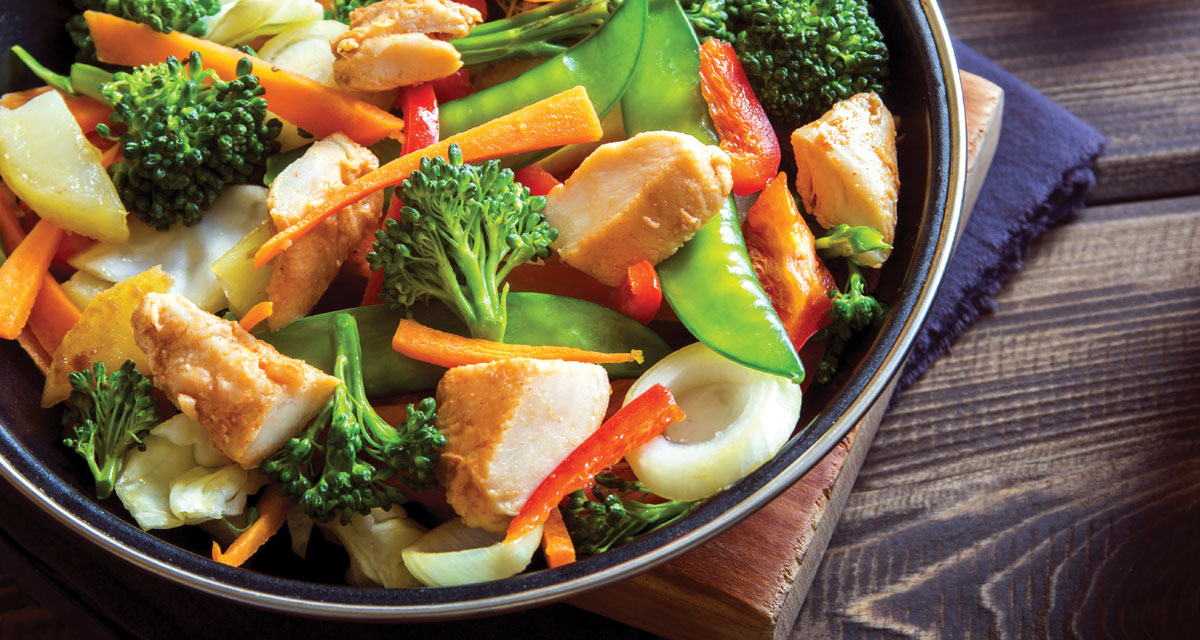Into streamlining your dishes into a one-pot or one-pan meal that can feed many hungry tummies? And, if you’re overwhelmed with the idea of occupying every burner on your stovetop, what’s the best advice? K.I.S.S (keep it simple, sweetie).
However simple or complex you decide to make your dish, combining ingredients into one pot or one pan offers a simple solution. Additional perk? No need to get burned out with dishwashing. Keep messes minimal without multiple pots and pans to clean.
Here are some recipes, tips, and tidbits to simplify and streamline your approach to cooking, so you can maximize your time with less cooking and cleaning.
As in other areas of life, such as in planning presentations and public speaking, there are two main approaches: prepare ahead of time based on a plan, or go with the flow and improv. Each has its pros and cons, so try them both out when meal making and decide which type of approach works best for you.
TIMING IS KEY
Gauge how long it will take each of the ingredients to cook without overdoing it. Pasta is best al dente
and not mushy, which is also more flavorful and nutritious. When veggies are overcooked, they turn brown and lose their color as well as their nutritional content. Hard root vegetables like potatoes, carrots, turnips, and parsnips take longer to cook than kale or spinach, so they go in first.
SOUPS AND STEWS
Start by adding broth and/or tea bags to boiling water in a pot on your stove, then add the slow-cooking basics such as lentils, beans, and rice. While they’re cooking, you can peel and/or chop the vegetables to add in next. No one ever said chicken and rice soup has to be made with just one type of rice. Like a variety? Try a combination of brown, black, and wild rice and maybe some quinoa, too.
SET ON SPICES?
A few dashes of salt and pepper may be all you need to enhance the flavor. Depending on what your senses say, consider adding paprika or cayenne for a bit of a kick. Think of what pairs well together like curry and turmeric for a coconut soup, cumin and chili for a Southwestern or Mexican stew, and ginger and lemongrass for an Asian inspired soup.
PALETTE PLEASERS
If you’re an omnivore or fan of seafood, add in your favorite protein. Or, if you’re a vegetarian or vegan, add in tofu or tempeh. Keep in mind your particular palette and whom you’re serving. If your taste buds savor the sweet, stir in some stevia, honey, or maple syrup to taste. If your palette craves a pucker punch, add in some vinegar, lemon, or lime juice.
And, of course if you’re a fan of the spicy, amp up the heat with an extra kick, using spicy peppers (check heat factor according to the Scoville unit that rates peppers). The key to spicing it up is to start out little by little, gradually adding in more spiciness.
When your one-pot dish is ready to serve, keep in mind that a great garnish is also an edible one, so consider adding a sprig or few of herbs, like cilantro, parsley, or basil.
STIR FRY AND HIBACHI
To try a similar approach with stir fry and hibachi style dishes, add a dollop of plant-based oil to your pan or wok. Distribute the oil more evenly by picking up the pan or wok and rotating it around a few times in circular motions, then add the ingredients as above.
Although it requires an extra pot to boil your rice or noodles separately, they can be an ideal complement. You can serve them separately or add them to your stir fry after cooking. Fan of fried rice? Add eggs into your rice or noodles and mix in the other vegetables.
Bon appétit and enjoy your one pot, wok, or pan meal!



















